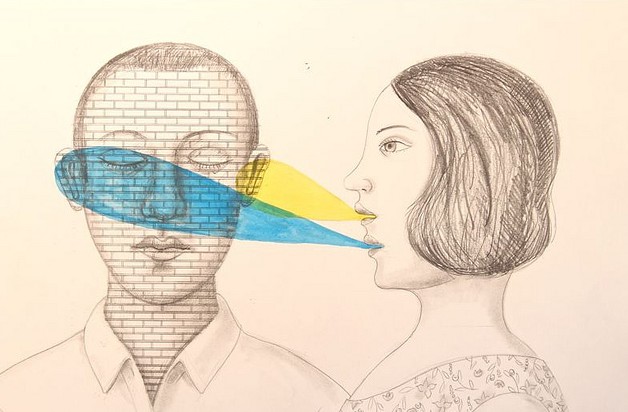
I recently started working on an organic produce farm about five minutes from my house.
My everyday tasks there are not glamorous—and I’d even venture to say that a lot of people would despise my daily jobs.
From about 8:00 a.m. to 4:00 p.m., I’m out in the fields harvesting a variety of different fruits and vegetables, usually with two other workers, Kent and Anne. Kent is one of the owners, always bouncing around from project to project, so about half the time it’s just Anne and I. Anne is a tall, freckle-faced woman with golden-blond hair, usually found wearing a tank top and long jean shorts that dip just below her knees.
Anne is sweet and kind and patient. She’s laughing constantly. And she always makes sure I’m drinking enough water.
Anne is also Deaf, so she won’t understand you unless she can see your lips and body moving—then, she’ll respond perfectly. If she’s not making eye contact with you, engaging with you face-to-face, that noise coming from your throat just reverberates outward until it hits a tree and falls flat. The conversation is seamless. Anne listens to your whole body with her whole body. With slanted eyebrows and shoulders pointed forward, she squints, gets close, and intently concentrates on you as if comprehending what you’re saying is life or death. She has an uncanny ability to look you directly in the eyes while meticulously scanning the ever-subtle facial expressions we all unknowingly make during conversation.
Speaking with Anne is refreshingly unique because it doesn’t matter how I project my voice or what tone I use; she uses so many other non-auditory tools to listen to me. She brings a subtle, unexplainable energy to the conversation—one that renders her inability to hear meaningless. It’s like her eyes told her ears not be ashamed anymore, not to worry, as if they said, “We’ve got this whole listening thing—you can just stay there and look pretty.”
And they do; Anne’s eyes listen better than most people’s ears. Her steady gaze puts you at ease, relaxes you into a Zen-like trance until words fall off your tongue as naturally as petals do on a wilting flower.
As easy as it may be conversing with Anne, it’s different. There are certain conversation luxuries you simply can’t use. You can’t say her name to grab her attention if she’s not looking, you can’t look away from her when speaking, and you can’t trail off and get distracted by something else mid conversation.
Speaking with Anne is an all-or-nothing, mano a mano type of deal, 100 percent of the time.
In the beginning, this was frustrating for me. I kept trying to grab her attention when she wasn’t looking, I avoided eye contact, and I kept moving my head in a manner that made it hard for her to read my lips. It seemed like we were never on the same page. At one point, I almost avoided conversation with her because it felt too much like a foreign interaction. You know those instances, when you encounter a non-native English speaker and it can be a drag to try to piece together what they’re saying so you’re nervous brain says, “Flee, flee, flee! Get out while you can!”
That’s what it felt like with Anne.
But day after day of being around Anne and needing one another to do our job, I learned to truly listen. From someone who can’t hear.
How ironic.
I learned to slow down and respect the way she was able to listen. Real listening is much more than an auditory occurrence, as Anne so beautifully proved. Real listening is allowing someone else to soak into you; to temporarily inhabit you. But this can’t occur without effort and sacrifice. And effort and sacrifice can’t occur without humility and patience. These are the building blocks for authentic listening and understanding.
We must realize that understanding the person in front of us is of paramount importance, regardless of their differences.
Think about how you converse with your friends and family and co-workers on a daily basis. Chances are that a lot of the time words spew out of your mouth without the other person being within five feet of you, let alone looking directly at you. While this way of speaking can be useful, it can also create a sort of caged communication where frustrations and misunderstandings feel like they have nowhere to go. Like how it was with Anne. But what you get out of real listening is a way out of the cage, an escape. And the key for that escape is the discipline it takes to execute effort and sacrifice and humility and patience.
Once you’re free, the frustrations and the misunderstandings—they vanish. It feels like you’re the only person on earth, the most important person on earth.
And that’s a feeling worth fighting for.
Author: Andrew Somps
Image: Rick & Brenda Beerhorst/Flickr
Editor: Renée Picard








Read 1 comment and reply